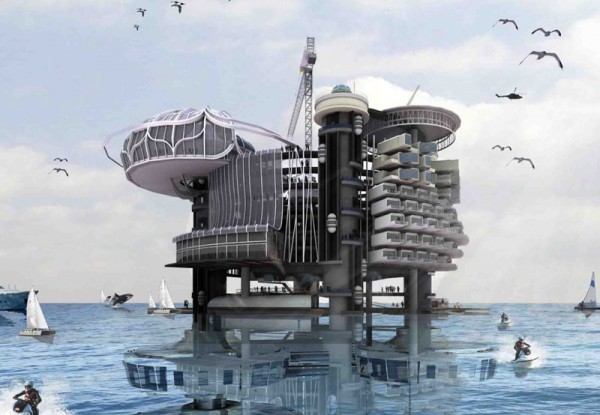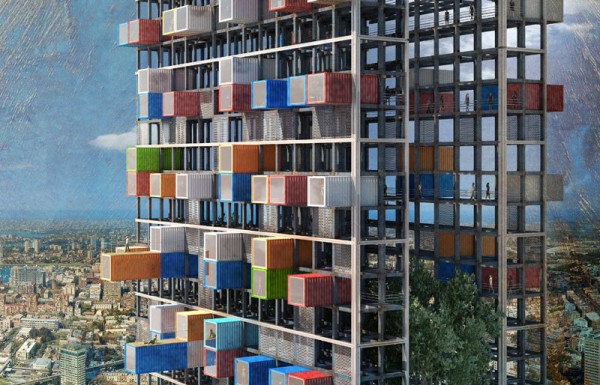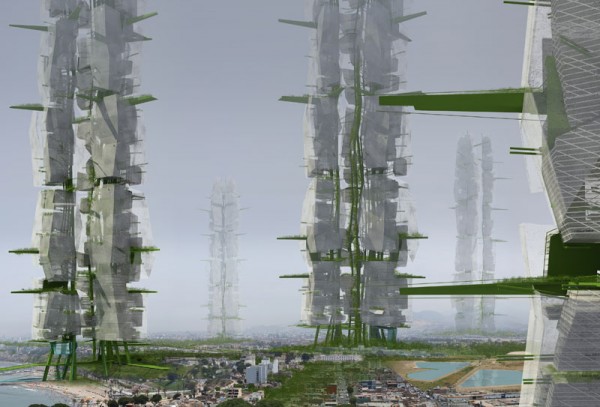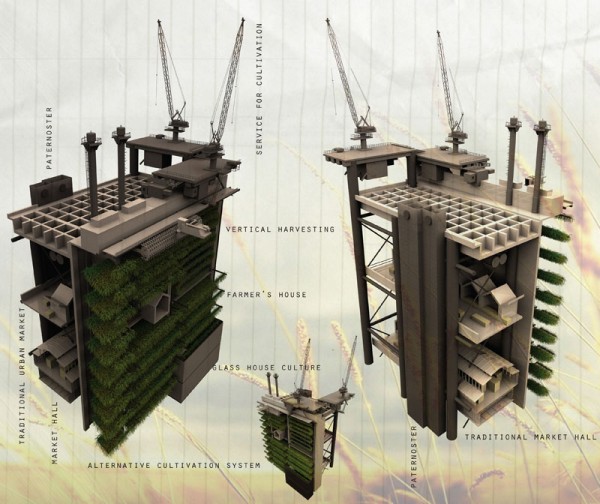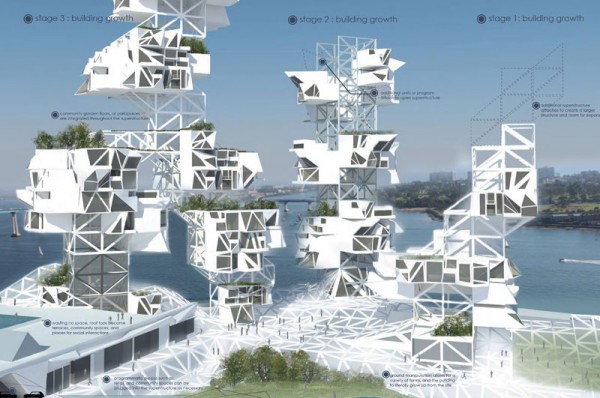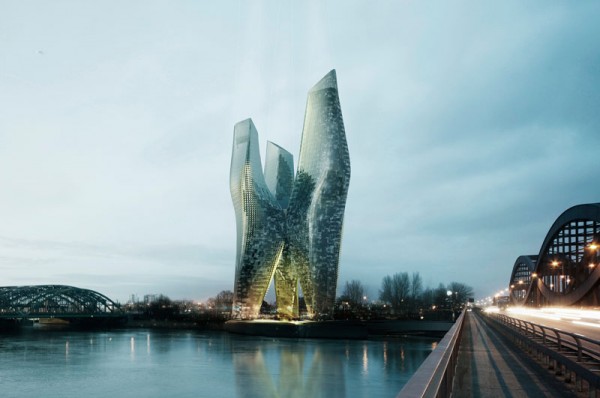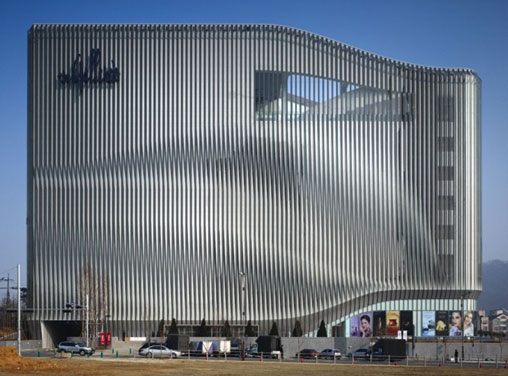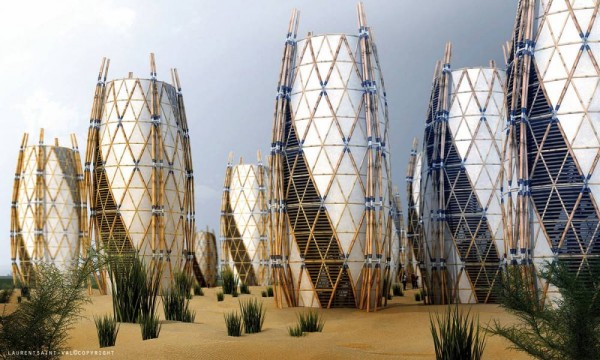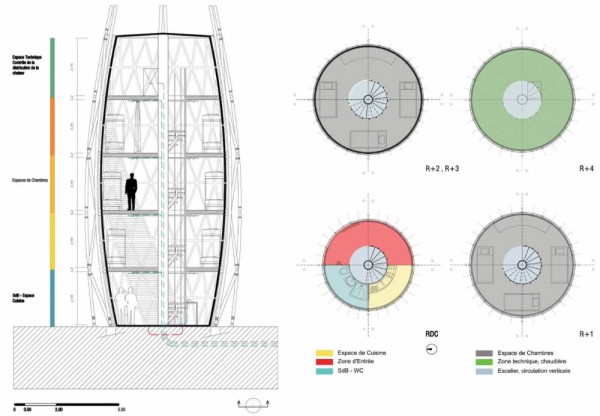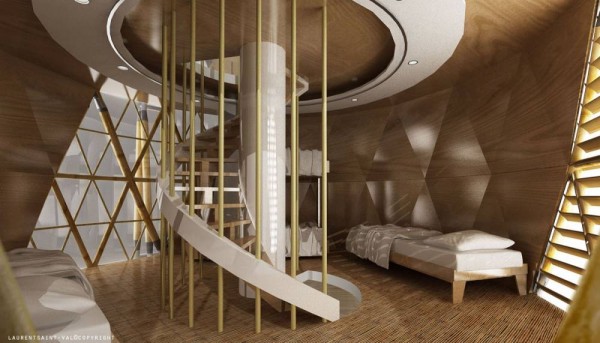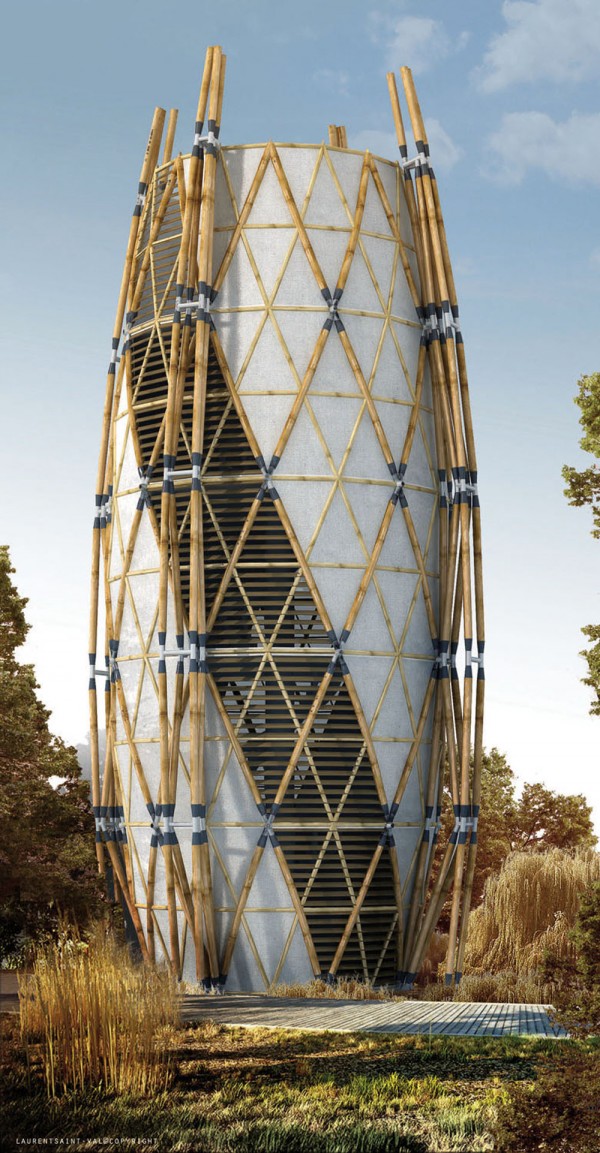Finalist
2011 Skyscraper Competition
Ku Yee Kee, Hor Sue-Wern
Malaysia
This design tackles current environmental issues, specifically at abandoned oil rig structures all around the world. The idea is to revitalize these structures and transform them into livable hubs. This activation process will use green energy and create a sustainable urban habitat. Solar energy will be harvested with a large photovoltaic membrane located on the roof while wind turbines will be located at strategic places along the four façades and tidal energy collectors at the bottom.
This design explores the possibility of living on the oil rig, above and below the ocean level. The general population can live above the water while specialized researchers such as marine biologists will work in underwater labs. The in-between zone will be used for housing and recreational areas. The existing structures could be strengthen with the use of peripheral steel beams that allow for high velocity wind to filter through the platform without obstructions. Read the rest of this entry »

